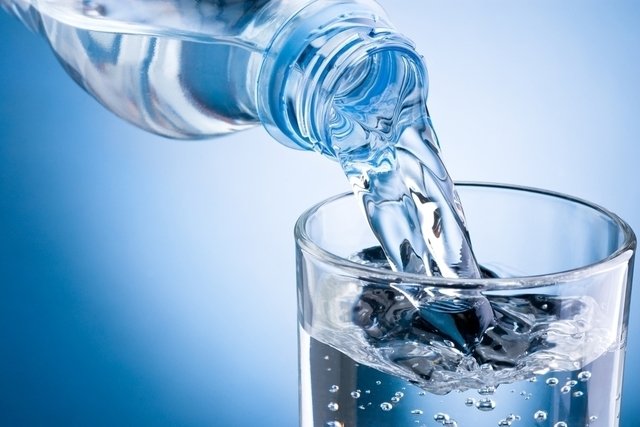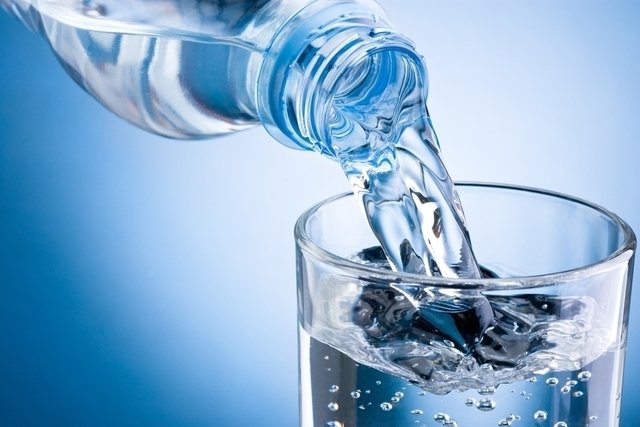Alkaline water is a type of water that has a pH greater than 7.5 and could have several benefits for the body, such as improving blood flow and muscle performance, in addition to preventing the development of cancer.
This type of water has been increasingly used as an option to replace energy drinks in high-intensity training, with the aim of improving muscle performance and reducing fatigue during muscle training, since acid is produced during physical activity. lactic acid, which ends up lowering the body’s pH.
However, the muscle can only function correctly within a pH range that must not be lower than 6.5 and, therefore, as lactic acid accumulates, there is a progressive increase in fatigue and a greater risk of injury.
Therefore, alkaline water could have benefits for physical activity, however this and other benefits of alkaline water are not yet fully scientifically proven, and it is important that more studies are carried out to confirm the benefits of consuming alkaline water.

Possible benefits
The benefits of alkaline water are still widely discussed, because until now there are few studies that show its effects on the body, in addition to the fact that the studies that do exist were carried out with a small sample of the population, which may not reflect the effects on a larger group.
Despite this, it is believed that the consumption of alkaline water could bring health benefits due to the fact that this water has a pH similar to that of blood, which is between 7.35 and 7.45, so it is believed that maintaining the pH at this level The band favors the body’s normal processes. Thus, the possible benefits of alkaline water are:
- Improved muscle performanceas it can better eliminate excess lactic acid accumulated during physical activity, preventing the emergence of cramps and muscle injuries and reducing the feeling of fatigue and recovery time after training;
- Prevents premature agingas it could act as an antioxidant;
- It can help treat reflux, since, according to one study, water pH above 8.8 can deactivate pepsin, which is the enzyme present in the stomach and which is related to reflux. On the other hand, deactivating pepsin can directly interfere with the digestive process and, therefore, this benefit still needs to be better evaluated;
- Could prevent cancer, since the more acidic environment can favor the differentiation and proliferation of malignant cells. Therefore, by making the blood pH always alkaline, there is a lower chance of developing cancer, however this effect still needs further studies to be proven;
- Could improve blood circulation, as a study carried out with 100 people demonstrated that the consumption of alkaline water is capable of reducing blood viscosity, which allows blood to circulate in the body more efficiently, also improving the supply of oxygen to the organs. Despite this, other studies need to be carried out to confirm this benefit.
Furthermore, other possible benefits of alkaline water are improving the immune system, improving the appearance and hydration of the skin, helping with the weight loss process, and may have benefits for people who have diabetes, high blood pressure or high cholesterol. However, these benefits have not yet been scientifically proven.

When to take
Alkaline water can be consumed during training with the aim of maintaining hydration and combating the effect of lactic acid that increases during exercise, this way it would be possible to avoid the effect of this substance on the body and reducing recovery time after exercise. .
When consuming alkaline water with the aim of improving performance in physical activity, the indication is that the water is consumed during the day to keep the body in an alkaline pH range, so that when it starts to training the body takes longer to become acidic and allows the muscles to function correctly for longer.
However, it is also important to use water with a pH equal to or lower than 7, as excessive alkalinity in the body can interfere with some processes, especially digestive processes, as the stomach works at an acidic pH. Thus, there may be the development of some symptoms such as nausea, vomiting, hand tremors, muscle changes and mental confusion. Therefore, it is important to alternate the consumption of water types.
How to make alkaline water
It is possible to make alkaline water at home, however it is important to pay attention to the proportions to avoid the water being excessively alkaline, having negative effects on the body.
To prepare alkaline water, simply mix a teaspoon of baking soda in each liter of water. Although the pH value cannot be easily calculated, as it varies depending on the region where you live, the more basic the water, the better the performance, and there is no risk from using sodium bicarbonate.
Bibliography
- CHYCKI, Jakub. Alkaline water improves exercise-induced metabolic acidosis and enhances anaerobic exercise performance in combat sport athletes. PLOS One. Vol 13. 11 ed; 2018
- IGNACIO, Rosa MC; JOO, Kyung-Bok; LEE, Kyu-Jae. Clinical Effect and Mechanism of Alkaline Reduced Water . Journal of Food and Drug Analysis. Vol 20. 1 ed; 394-397, 2012
- WEIDMAN, Joseph et al. Effect of electrolyzed high-pH alkaline water on blood viscosity in healthy adults. Journal of the International Society of Sports Nutrition. Vol 13. 2016
- WANG, Yu-lian. Preliminary observation on changes of blood pressure, blood sugar and blood lipids after using alkaline ionized drinking water. Shanghai Journal of Preventive Medicine.
- KOUFMAN, J. A., JOHNSON, N. Potential benefits of pH 8.8 alkaline drinking water as an adjunct in the treatment of reflux disease. . . . Ann Automotive Laryngeal Rhinol. Vol 121. 7 ed; 431–434,

Sign up for our newsletter and stay up to date with exclusive news
that can transform your routine!
Warning: Undefined array key "title" in /home/storelat/public_html/wp-content/plugins/link-whisper-premium/templates/frontend/related-posts.php on line 12
Warning: Undefined array key "title_tag" in /home/storelat/public_html/wp-content/plugins/link-whisper-premium/templates/frontend/related-posts.php on line 13





